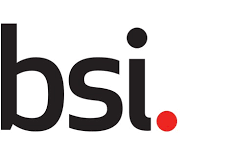Any comments received will be submitted to the national committee “AMT/4 – Industrial data and manufacturing interfaces” for consideration when deciding the UK response to the associated Standards Development Organisation.
- Proposal: Automation systems and integration — Industrial digital twin interface architecture
Please visit: ISO/NP TS 25271
Comment period end date:30/06/2024
Scope
Automation systems and integration – Industrial digital twin interface architecture specifies the architectural components of industrial digital twin systems that are composed of the digital twin, the physical twin and the interface between these two twins.
The followings are within the scope of this standard:
a) Elements of industrial digital twin systems that represent the unique architecture
b) Interactions among the three elements of industrial digital twin systems
c) Characteristics of industrial digital twin systems which are different from similar concepts or technologies
d) Typical use cases of the three element architecture are examined.
The following are outside the scope of this standard a) Applications of industrial digital twin systems
Purpose
As the fidelity (or quality) of the digital (or virtual) model of a physical product improves over time, people prefer to work with the digital model instead of the physical product. Motivations are strong for a physical product which is operating in a remote site, such as an ocean wind power system or vehicles on Mars. Dangerous operations with nuclear power plants or explosive materials are further motivations.
There are different models of digital twins. This specification is to analyze the elements of digital twin systems to set the architecture of industrial digital twin systems.
Figure 1 Three element architecture of industrial digital twin systems
Figure 1 shows the configuration of the architecture of industrial digital twin systems.
Because the concept of digital twin is evolving, there are different frameworks or architectures in use. Positioning of digital twin regarding the AR (augmented reality), Metaverse, or CPS (cyber physical system) is analysed. Other frameworks or architectures of digital twin are also compared.
- Proposal: Automation systems and integration — Core terminology for simulation data management
Please visit: ISO/NP TS 25270
Comment period end date:30/06/2024
Scope
A core terminology for Simulation Data Management (SDM) that can be used to define meta-data for engineering simulation. NOTE 1 An engineering simulation is carried out using simulation models of a system, product, phenomenon, or process to: determine whether a design satisfies its technical requirements; or predict operational behaviour. NOTE 2 Engineering simulation is often carried out for mechanical products such as automobiles or aircraft, and structures such as buildings and bridges. However, engineering simulation is broader and is used to investigate a wide range of processes such as: simulations of battery charging and other electro-chemical or dynamic molecular processes; manufacturing of consumer products, including processes such as forming and welding. The following are within the scope: the terms used to describe an engineering simulation of discrete products and manufacturing processes; the properties, inputs and outputs of the engineering simulation; the terms used to describe a simulation model, its properties, provenance and actual use; the terms used to describe the maturity and appropriateness of a simulation model and simulation results for a possible use, including verification, validation and uncertainty quantification; the terms used to describe the content of an engineering simulation data set, its properties, provenance and actual or possible use; a mapping of these terms on to existing top level ontologies. The following are outside the scope: simulations of distributed networks, such as electrical power networks; simulation of process plants for the validation, optimisation and certification of operating scenarios; system simulations for operator training. comprehensive lists of terms that are specific to a single kind of engineering simulation, such as CFD or crack growth; a format for the representation of meta-data; NOTE 3 Comprehensive lists of terms that are specific to a single kind of engineering simulation and a format for the representation of meta-data can be addressed by companion standards.
Purpose
This ISO/TS will define the terms used to describe engineering simulation activities across sectors and disciplines. The terms will support the description of simulation activities and the provenance and valid usage for simulation models and resulting data sets.
Simulation is a heavily computerised activity so the rate at which models and result data sets are generated can far exceed the capability of the analysis engineer to document the output. It is envisaged that the terms will often be used in computer generated metadata.
Engineering simulation is essential for the design and certification of a product. Engineering simulation is carried out throughout the life of a product to address in-service failures, to assess suitability for new roles, and for re-certification.
There can be a complicated network of engineering simulations activities, multiple simulation models with different domains of validity, and multiple results data sets also with different domains of validity. The NAFEMS Simulation Data Management Working Group (SDMWG) is work in this area, with the following published or in preparation: the NAFEMS guide “What is simulation data management”; the “Unified Model Characteristics for Engineering Simulation” (UMC4ES) draft created by the NAFEMS ASSESS initiative.
The area is also supported by ISO 10303-243 “Application protocol: For modelling and simulation information in a collaborative systems engineering context (MoSSEC). The proposed ISO/TS will bring together and harmonise the terminology used in these publications.
If you have any comment or need more information, please contact Sami Ortiz at sami.ortiz@mta.org.uk

